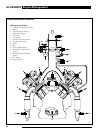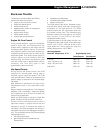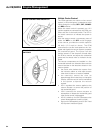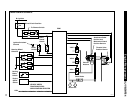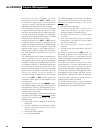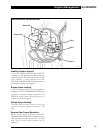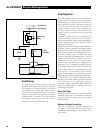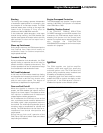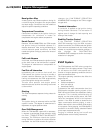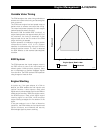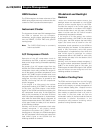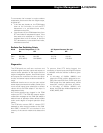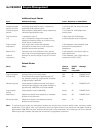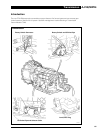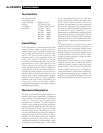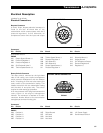
AJ-V8/5HP24
60
Engine Management
Base Ignition Map
A base ignition map contains optimum timing for
a nominal engine throughout the engine speed
and load ranges. Corrections are then added to
adjust for specific operating conditions.
Temperature Corrections
Corrections are added to the ignition timing to
compensate for variations in intake air
temperature and engine coolant temperature.
Knock Control
Between 700 and 6800 RPM, the ECM retards
the ignition timing of individual cylinders if it
detects detonation. Also, during acceleration at
critical load and speed conditions, the ECM
retards the ignition timing to prevent the onset of
detonation.
Full Load Advance
At full load, the ECM advances the ignition timing
at the same time as fuel enrichment is applied.
The degree of advancement is dependent on
engine speed.
Fuel Cut-off Interaction
Immediately prior to over-run fuel cut-off, the
ECM retards the ignition timing to provide a
smooth transition between the two states. On
fueling re-instatement the ECM progressively
returns the ignition timing to the nominal.
Throttle valve position and engine speed
determine the rate at which the timing is returned
to the nominal.
Starting
The ECM incorporates separate timing values for
starting.
EGR
The ignition timing is advanced while the EGR
system is active. The degree of advancement is
dependent on engine speed and load.
Gear Shift Management
When the TCM decides a gear shift is necessary,
it requests a percentage torque reduction using
the CAN - TORQUE REDUCTION REQUEST
message. The ECM then retards the ignition
timing sufficient to achieve the torque reduction
requested. As the ECM retards the ignition, it
changes the CAN-TORQUE REDUCTION
ACKNOWLEDGE message to the TCM to trigger
the gear shift.
Transient Interaction
A correction is applied to the ignition timing
during throttle transients. The correction is
against rate of change for both opening and
closing of the throttle.
Stability/Traction Control
If the CAN-FAST TORQUE REDUCTION
IGNITION message from the BCM requests
ignition intervention, the ECM retards the ignition
by the amount requested until the throttle valve
reaches its required torque reduction position. It
also changes the CAN-TRACTION
ACKNOWLEDGE message to confirm that torque
reduction is in progress.
EVAP System
The ECM operates the EVAP valve to purge the
fuel vapor from the carbon canister. Purge rates
(ie. the amount the EVAP valve opens) are a
function of engine operating conditions and the
vapor concentration level.
The engine operating conditions that affect the
purge rate are:
• speed and load
• coolant temperature
• time from start-up
• closed loop fueling.
To determine the vapor concentration level, the
ECM applies stepped opening signals to the
EVAP valve and monitors the subsequent fueling
correction. This is usually performed prior to
purging, so that when purging starts, the EVAP
valve can immediately be set to the optimum
position. If the ECM is unable to determine the
vapor concentration before purging, it uses a
default value which it then modifies while purging
is in progress. During purging, the ECM applies a
correction to the basic fueling calculation based
on the vapor concentration level.
Purging is inhibited during fuel cut-off and
stability/traction control fueling intervention.



